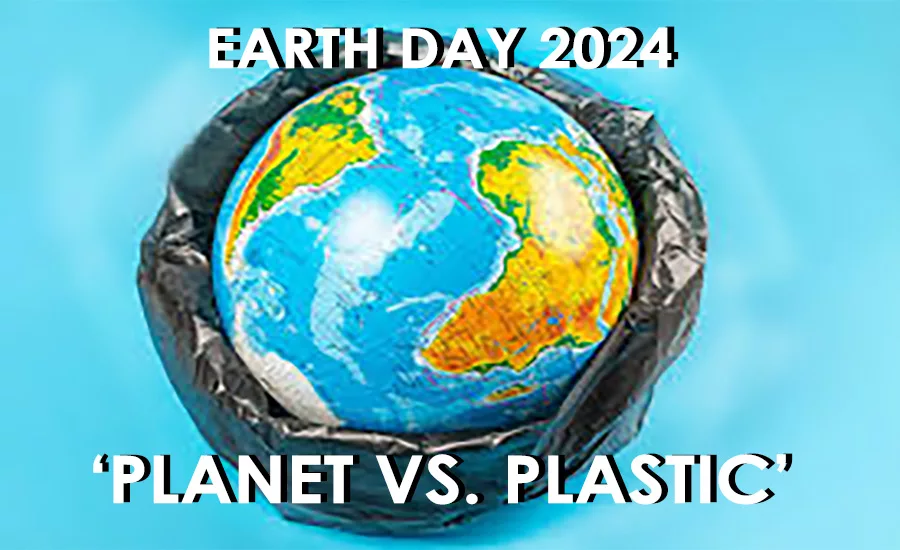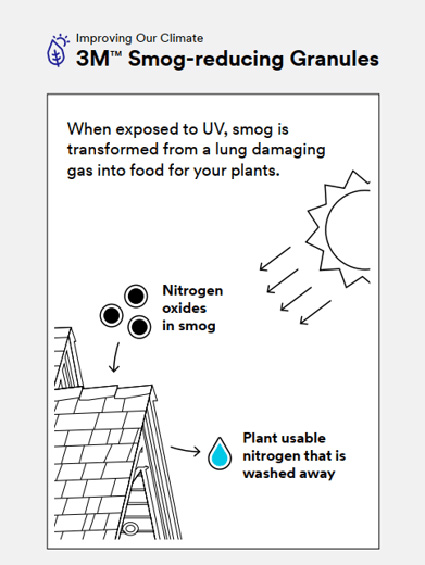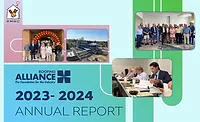Earth Day 2024
Embracing Sustainability in the Roofing Industry
Roofing contractors and product manufacturers each promote their commitment to waste reduction and environmental stewardship

Today, April 22, is Earth Day, and this year’s theme is "Planet vs. Plastic." Earthday.org is calling for a 60% reduction in plastic production by 2040, and for the phase-out of single-use plastics by 2030.
— Image courtesy of Flickr; Bryan Gottlieb for Roofing Contractor
As the world celebrates the 54th Earth Day on April 22, the global community turns its attention towards the urgent issue of environmental conservation. This year's theme, "Planet vs. Plastics," highlights the pressing need to combat plastic pollution for our planet's and its inhabitants' sake.
The roofing industry, which plays a significant role in the construction sector, has the potential to meaningfully contribute to this cause.
Earth Day, established in 1970, was a watershed moment when 20 million Americans united for enhanced environmental protection. This landmark event led to transformative legislation and the birth of the modern environmental movement. The global Earth Day celebration serves as a powerful reminder of our shared duty to wisely manage the Earth's resources.
In keeping with the spirit of Earth Day, the roofing industry has made notable strides towards sustainability. Innovations in materials and practices are paving the way for a greener future. Companies are increasingly adopting eco-friendly materials like metal roofing, which is durable, recyclable and often made from renewable resources. Green roofs, which incorporate vegetation, are gaining popularity for their insulation properties and ability to mitigate urban heat islands.
Companies like EcoWatch and Choice Roof Contractors have received recognition for their commitment to environmentally-friendly roofing solutions. These firms are examples of the industry's shift towards sustainable practices, from using recycled materials to integrating solar panels.
Yet, the path to sustainability for the roofing industry is not without hurdles. The escalating effects of climate change have led to increased costs, with more frequent repairs and replacements due to extreme weather events. Studies have revealed that climate change is inflicting significant financial damages, costing billions annually in repairs.
The roofing industry is navigating these economic pressures while maintaining its commitment to environmental stewardship. Eco-friendly options contribute to a greener planet and offer energy efficiency and long-term durability benefits.

GAF is one of the key players in this field, offering cool roofing materials that meet industry standards for performance while minimizing environmental impact. CertainTeed is another notable manufacturer known for its sustainable product line, which includes solar-integrated asphalt roofs designed to last longer and reduce landfill waste.
Recycled materials are also gaining popularity, with companies like EcoStar producing shingles made from post-consumer waste, such as rubber and plastic, which helps reduce waste and conserve resources.
Regarding cost, eco-friendly roofing materials may cost more upfront than traditional options. However, the long-term savings in energy efficiency, reduced maintenance expenses, and potential increase in property value over time outweigh the upfront cost.
For instance, while more expensive initially, metal roofs can offer a greater return on investment due to their durability and energy savings. Metal roofing is known for its high reflectivity and recyclability; manufacturers like Interlock and Boral offer high-quality recycled content.
Large multi-product building envelope manufacturers like Owens Corning, Holcim and Malarkey Roofing Products have each made environmental stewardship a core principle of their companies. These and other companies have implemented comprehensive strategies to reduce their ecological footprint. Owens Corning has a robust Environmental, Health, Safety & Product Stewardship Policy. Its Environmental Management System is designed to support adherence to its policy and ensure compliance with environmental laws and regulations. Moreover, Owens Corning has set ambitious 2030 sustainability goals, including reducing greenhouse gas emissions by switching to 100% renewable energy.
Holcim, a multinational building-material leader, aims to demonstrate that zero environmental impact is possible. Holcim has been implementing projects to reduce water, internal waste, and energy to improve its environmental performance. The company has reported a 10% reduction in dust emissions per metric ton of clinker and saved 1.5 million cubic meters of water through consumption reduction and recycling.
Another player in eco-friendly roofing is GAF, which has outlined a comprehensive Sustainability Promise. GAF is committed to creating opportunities that enhance lives and livelihoods while investing in the planet's future. The company has set ambitious goals for 2030, including establishing a material take-back program for recycled asphalt shingles and achieving an 80% waste diversion rate across all manufacturing plants. GAF has also expanded its green portfolio by conducting Life Cycle Assessments of all core products and driving product expansion in solar and non-asphaltic roofing products.
Additionally, companies including Malarkey, Atlas Roofing and Owens Corning have incorporated 3M’s Smog Reducing Granule technology, which employs photocatalytic-coated granules that help clean the air of emission pollutants.
Contractors have adopted these new products as the cost of production has decreased and consumer demand has increased. Several recent Roofing Contractor magazine company profiles, including Sustainable Roofing of Texas, Lifetime Quality Roofing of Columbus, Ohio, and Three Tree Roofing of Seattle, have made sustainability key selling points.
These and many other contractors and their manufacturing counterparts have each helped reduce the energy required to produce and install roofs. This reflects a broader industry trend where environmental responsibility is becoming integral to corporate strategy, driving innovation and fostering a culture of sustainability.
As we commemorate Earth Day 2024, the roofing industry stands at the forefront of a critical junction. Continuing to innovate and adopt sustainable practices can be pivotal in shaping a more resilient and environmentally conscious future.
Happy Earth Day 2024!
Looking for a reprint of this article?
From high-res PDFs to custom plaques, order your copy today!







